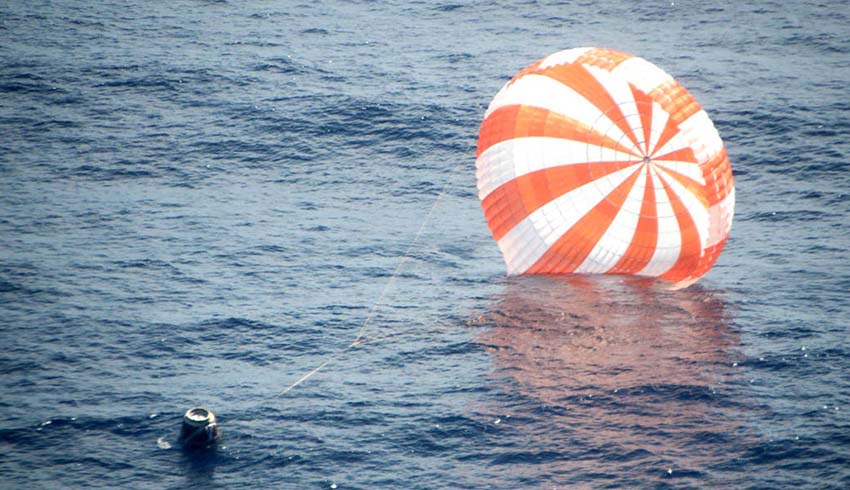A parachute-assisted splashdown in the Pacific Ocean occurred that afternoon just west of Baja, California. A recovery team then secured Dragon on a boat for the return trip to the Port of Los Angeles, wrapping up SpaceX’s 17th resupply mission to the ISS.
Filled with more than 5,500 pounds (2,494 kilograms) of supplies and payloads, Dragon launched aboard a Falcon 9 rocket on 4 May 2019 from Cape Canaveral Air Force Station in Florida, and arrived at the Space Station on 6 May.
The Dragon spacecraft flown on this mission previously visited the ISS during SpaceX’s CRS-12 mission in August 2017. Dragon is the only spacecraft currently flying that is capable of returning significant amounts of cargo to Earth.
Dragon is a free-flying spacecraft designed to deliver both cargo and people to orbiting destinations. It is the only spacecraft currently flying that is capable of returning significant amounts of cargo to Earth. Currently Dragon carries cargo to space, but it was designed from the beginning to carry humans.
The Dragon spacecraft is capable of carrying up to seven passengers to and from Earth orbit, and beyond. The pressurised section of the capsule is designed to carry both people and environmentally sensitive cargo. Towards the base of the capsule and contained within the nose cone are the Draco thrusters, which allow for orbital manoeuvring.
Dragon’s trunk not only carries unpressurised cargo but also supports the spacecraft during ascent. The trunk remains attached to Dragon until shortly before re-entry into Earth’s atmosphere.

